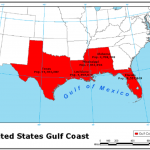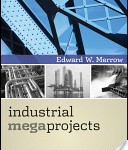- Troubled Projects – The recognition and management of Troubled Projects represent one of the most unique situations in the spectrum of project management challenges. Specialized skills and approaches are required in order to achieve successful outcomes. M&M will post a series of observations and recommendations regarding the recognition, recovery and resolution associated with Troubled Projects.
- Troubled Projects –A Troubled Project may be considered as being a project that may not achieve a successful outcome. Modern project success criteria centers on project completion / delivery that is: Within allocated time duration; within budgeted costs; Achieving requisite performance level(s); and is Acceptable to the Customer / Buyer.
- Troubled Projects –A Troubled Project is expected to, forecasted to, or otherwise may not achieve one or more of the project’s success criteria / objectives. Typical success criteria are project completion / delivery that is: Within allocated time duration; within budgeted costs; Achieving requisite performance level(s); and is Acceptable to the Customer / Buyer.
- Troubled Projects – Call to Action Basically, a Troubled Project is one that is reasonably expected to not achieve its Business Case objectives. Managerial action is needed to enhance the possibility of achieving these Business Case objectives. This managerial action may be summarized is the three R’s – Recognition, Recovery and Resolution.
- Troubled Projects – Leading Indicators Recognition process should begin with leading indicators. Some leading indicators – Criticisms by Key Stakeholders, High Turnover of Key Stakeholders, Untimely / Late Decision Making, Poor Morale, Working Excessive Hours (other than occasionally), and / or Frequent Crisis Management.
- Troubled Projects – Leading Indicators Recognition process should begin with leading indicators. More leading indicators – Labor Peak Greater than Planned, Labor Peak Later than Planned, Unexpectedly High Field Labor Turnover, Negative Cash Flow, Billing / Invoicing Less than Planned, and / or Construction Support Expenditures Greater than Planned.
- Troubled Projects – Leading Indicators Recognition process should begin with leading indicators. Even more leading indicators – Trending / Forecasting not in use, illogical, highly optimistic, unrealistic; Baselines not in use; Commodity consumption exceeding planned; Meetings are combative; Unwillingness to accept responsibility; and / or Poor change management.
- Troubled Projects – Recognition There is urgency in the timeliness of recognition. Early recognition and action increases the quality of Recovery (remember – Recognition, Recovery and Resolution) options and potential results. Like many project challenges – “Find IT early, Fix IT fast.”
- Troubled Projects – Recognition From leading indicators, segway into more quantitate project Key Performance Indicators (KPI’s). Use all KPI’s together (not individual KPI’s) to consider whether trouble exists. There are about five: Schedule (usually CPM), Progress Curves (rate of progress), Productivity (key labor groups), Scope of Work and Total Labor per month.
- Troubled Projects – Recognition The transition from Recognition to Recovery is the “trick.” Recovery – Mastering the Art of the Achievable. Unrealistic / Excessively Optimistic recovery plans and actions are poison. Recovery plans that lack ambition and aggressiveness are vulnerable to criticism. Key attributes – Integrity, Leadership, Courage and Prayer.
- Troubled Projects – Recovery The three R’s when Managing Troubled Projects are Recognition, Recovery and Resolution. Recognition and Recovery are addressed in Project Recovery, a highly authoritative publication authored by Dr. Harold Kerzner. Dr. Kerzner provides a complete process and relates it to Project Management Institute (PMI) managerial process.
- Troubled Projects – Recovery As discussed in and earlier post, the full set of KPI’s are needed. Often, some are missing or not used. If KPI’s are missing, build the missing KPI’s by reverse engineering using available data and that can be efficiently accessed. Build the KPI from present back to start of the project. Do not delay other actions – work concurrently.
- Troubled Projects – Recovery Analyses of the KPI’s combined with project assessments will reveal the path forward for recovery. Once the path has been identified and planned, rebaseline the KPI’s such that meaningful managerial feedback can be achieved. For the one or two KPI’s that reveal recovery status and progress, shorten the reporting period (e.g. monthly to weekly).
- Troubled Projects – The recognition and management of Troubled Projects represent one of the most unique situations in the spectrum of project management challenges. Specialized skills and approaches are required in order to achieve successful outcomes. M&M will continue to post a series of observations and recommendations regarding the recognition, recovery and resolution associated with Troubled Projects.
- Troubled Projects – Call to Action Basically, a Troubled Project is one that is reasonably expected to not achieve its Business Case objectives. Managerial action is needed to enhance the possibility of achieving these Business Case objectives. This managerial action may be summarized is the three R’s – Recognition, Recovery and Resolution.
- Troubled Projects – Recognition From leading indicators (see earlier posts), segway into more quantitate project Key Performance Indicators (KPI’s). Use all KPI’s together (not individual KPI’s) to consider whether trouble exists. There are about five: Schedule (usually CPM), Progress Curves (rate of progress), Productivity (key labor groups), Scope of Work and Total Labor per month.
- Troubled Projects – Owners and Major Disruptions – The world is in the midst of major disruptions to capital projects. Projects are being delayed, postponed, suspended, cancelled and otherwise seriously impacted. As owners consider the path forward, they first are compelled to consider putting their investment into a suitable status for the “hold” period (without knowing the length of the “hold”). Putting the project on hold involves creating stability and closure (temporary or permanent) with all major stakeholders.
TROUBLED PROJECTS
CAPITAL PROJECTS MANAGEMENT – US Gulf Coast
Capital project construction forecasts (US Gulf Coast) concur regarding robust project activity and growth for calendar years 2017 and 2018. These glowing forecasts are tempered with forecasts of craft labor, field supervision and project/construction management shortages. Demand for experienced project resources is expected to exceed supply. This is similar to Venezuela (post-nationalization), Canada (oil sands expansion) and other marketplace imperfections. M&M has evaluated these forecasts and rationalized the supply and demand implications as well as professional managerial options and paths forward. This is an emerging and dynamic managerial, consulting and legal business opportunity. M&M’s recent and extensive work in the field at active job sites of large and complex projects confirms the emerging situation. Here are a few topics, questions and/or observations:
- Skilled, experienced and dynamic management will be required.
- Cost and/or Schedule Certainty is clearly at risk regardless of the development and delivery system (PMI, CMAA, CII, AACE, IPA, proprietary or other systems).
- Construction schedules will be driven or constrained by human resource shortages (field labor, engineering, project management).
- Managerial planning and management must focus on:
- Acquisition of adequate supervision and field labor force
- Optimization of your field labor (and engineering labor).
It is important to note that McLaughlin and McLaughlin Project and Dispute Consulting LLC [M&M] is not a law firm and is not intending to provide legal advice. M&M is a consulting firm providing (among other services) non-legal expertise in construction claims, dispute resolution and litigation support. For further information on M&M services, please see www.McLaughlinandMcLaughlin.com.
https://twitter.com/McLaughProject
https://www.facebook.com/McLaughlin-McLaughlin-Project-and-Dispute-Consulting-LLC-134974839908446/
CONSTRUCTION CLAIMS and DISPUTES – Subject Series Summary – Update 11-Nov-2014
Just as the businesses and economies have cycles, capital projects (particularly engineering and construction) have recurring cycles. The pendulum swings back and forth within the bounds of the capital project cycle. In capital projects, the cycle can be three to five years, depending on the economy, size and complexity of the projects and other factors.
At this time, the market seems to be transitioning from project planning and early execution into middle to later-stage execution with emergence of disputes. As the claims and disputes marketplace intensifies over the next several years, Construction Claims and Disputes will become an increasingly commonplace and a relevant topic for capital project management professionals.
Construction Claims and Disputes continues to be the most popular subject on Project Professionals. Further, it is the most requested line of services provided by McLaughlin & McLaughlin. M&M are project management practitioners (in the field) and, yes, we practice what we preach. Further, our choice of topics for Project Professionals posts is driven by and reflective of practical and current issues. This is not esoteric, academic or hypothetical “stuff”.
This summary update provides readers with an overview of prior posts and provides a baseline for future posts that will follow on a timely basis. Initially, this Subject Series, Construction Claims and Disputes, was posted during January 2011 through July 2014. During the past several years, greater than 25% of views by visitors have been to this Subject Series.
Ideally this Subject Series provides a starting point to investigate best practice on many planning and execution features of construction claims and disputes. [Read more…]
CONSTRUCTION CLAIMS and DISPUTES – Subject Series Summary
Construction Claims and Disputes is the most popular subject on Project Professionals and has been for several years. Further, it is the most requested line of services provided by McLaughlin & McLaughlin. M&M are project management practitioners (in the field) and, yes, we practice what we preach. Further, our choice of topics for Project Professionals posts is driven by and reflective of practical and current issues. This is not esoteric, academic or hypothetical “stuff”.
This summary update provides readers with an overview of prior posts and provides a baseline for future posts that will follow on a timely basis. Initially, this Subject Series, Construction Claims and Disputes, was posted during January 2011 through August 2013. During the past several years, greater than 25% of views by visitors have been to this Subject Series.
Ideally this Subject Series provides a starting point to investigate best practice on many planning and execution features of construction claims and disputes.
Construction Claims and Disputes (Part 0) – This introduction formats the discussion with definitions, claim categories and key industry references. This post is consistent with M&M experience in many years of professional services.
The Overview (Part 1) –Part 1 updates Part 0, the introduction.
Construction Claims Management Planning (Part 2) – This is the most popular post in this (most popular) Subject Series. Construction claims (or the risk of claims) can and should be professionally managed. View this process as a piece of project (execution) planning [link]. This post outlines elements of a Construction Claims Management Plan. Further, it addresses elements of defining a Claim Strategy. Stakeholders include Owners, Prime Contractors and Subcontractors. Do not miss this post.
Current Project Professionals Posts (Part 3) – Claims are organized into four general categories. These categories are consistent with the frequency of occurrence, methods of management and other key managerial considerations. The categories are
- Scope of Work, Changed Work or Variations
- Delay and Acceleration, Time-Related
- Disruption / Productivity (usually labor/labour)
- Terms and Conditions.
Pricing Construction Claims (Part 4) – This post addresses the… Think you know how to price your (or other’s) claims? Andrew (Andy) Ness, 2012-13 Chair, ABA Forum on the Construction Industry probably disagrees with your answer. Read this post and consider Andy’s position as well as other considerations regarding claim pricing/damages. The content of the recent ABA book on the subject is covered.
Pricing Construction Claims (continued) (Part 5) – Are construction claims and disputes “all about the money?” Some believe this to be the case. This post (Part 5) expands on Part 4 by addressing pricing and citing additional references.
Scope of Work – Baseline (Part 6) – It is widely believed and accepted that Scope of Work and/or Changed Work is the single largest source of claims and disputes in engineering and construction (as well as many other contracted services). In order to establish departures from the baseline scope of work, you must be able to define the applicable baseline. This post cites various sources for baseline definition,
Scope of Work – Plans and Specifications (Part 7) – Several industry sources (publications) are used to elaborate on execution and contracting strategies that rely on plans and specifications as a major component of scope or work definition. This discussion includes typical contract documents and contract provisions wherein scope of work, services, supply and / or facilities is / are defined. Suggestions for configuration and change management in the field are included.
Other Subject Series that are both relevant and popular include:
- Managing Risk of Delay [16 posts]
- Contract Notice and Recognition [4 posts]
- Productivity [18 posts]
- Ways of Working [7 posts]
- Time Management – Schedule Specification Implementation [6 posts]
Going forward, we will post other features of CONSTRUCTION CLAIMS and DISPUTES.
My we wish you the best of luck and let us all attempt to confront and deal with these and other project management challenges. It is crucial that recognition and anticipation of these issues occur during initiation and planning. However, the recognition and management should continue through execution, controlling and closeout.
Please note that McLaughlin and McLaughlin [M&M] is not a law firm and is not intending to provide legal advice. M&M is a consulting firm providing (among other services) non-legal expertise in dispute resolution and litigation support. The Resource Center is for the convenience of blog visitors and M&M does not offer this for commercial purposes. For further information on M&M services, please see www.McLaughlinandMcLaughlin.com.
PROJECT PROFESSIONALS POSTING RESUMPTION
McLaughlin and McLaughlin [M&M] is pleased to announce that they will resume postings at their blog, Project Professionals. Since mid-2013, M&M has been heavily involved with several large assignments [Construction claims regarding several power plant projects]. Now that workload permits, new blog postings will be offered.
M&M wishes to remind followers (new and ongoing) that there are many offerings at the Project Professional site. They are organized by what we call Subject Series.
These Subject Series are:
- ABA Dispute Resolver A View From the Field Project Execution Contracting Strategies Large and Complex Industrial Projects 4 Parts
- Construction Claims and Disputes [8 posts]
- Project Planning [5 posts]
- Managing Risk of Delay [16 posts]
- Contract Notice and Recognition [4 posts]
- Productivity [18 posts]
- Schedule Validation and Audits [3 posts]
- Staffing Your Project Management Team [8 posts]
- Project Management Challenges [11 posts]
- Time Management – Schedule Specification Implementation [6 posts]
- Ways of Working [7 posts]
M&M will resume with additional posts in the Subject Series Construction Claims and Disputes. This Subject Series focuses on methodologies, process, reference resources, techniques and other practical advice regarding the preparation, evaluating and managing construction claims and disputes.
We hope that you will find these existing and new posts informative and relevant.
We wish you the best of luck in this New Year.
Please note that McLaughlin and McLaughlin [M&M] is not a law firm and is not intending to provide legal advice. M&M is a consulting firm providing (among other services) non-legal expertise in dispute resolution and litigation support. The Resource Center is for the convenience of blog visitors and M&M does not offer this for commercial purposes. For further information on M&M services, please see www.McLaughlinandMcLaughlin.com.
CONSTRUCTION CLAIMS and DISPUTES – (Part 5)
Pricing Construction Claims – (continued)
McLaughlin and McLaughlin’s Project Professional post is the fifth in a Subject Series Construction Claims and Disputes. This Subject Series contains discussions regarding potential and actual construction claims and disputes situations. In this series, we focus on the key aspects of construction claims and disputes management (rather than mechanics). This discussion is a continuation of Part 4 regarding the pricing of claims and disputes. The compulsion or question is – “How much is a potential claim worth?” In virtually all disputes, the central issue is the money. Since it is a win-lose situation, the outcome may be that someone (one party) will pay another party. Hence, the money is the ultimate issue (sometimes time is at issue, generally presenting itself in money or damages related to the time).
There is an old saying “win the battle, lose the war” which applies to damages in construction claims and disputes. With facts, logic and analyses on their side, one party (Party A) can prepare and present a very compelling argument regarding the claim (against Party B). However, winning the argument on the cause (or as it is called, entitlement) is relatively useless without winning the argument on the money related to the effect (or sometimes called damages, quantum, compensation, pricing).
Even more compelling, the decision to proceed with a claim (and potentially spend millions of dollars on expenses such as legal and expert fees) should be heavily driven by the potential recovery (the money). Consequently, parties must have a reasonable assessment of the true value of the dispute and the ability to successfully demonstrate or prove these damages in the resolution process. Without the ability to prevail on a suitable and acceptable level of damages, pursuing a construction claim through a costly dispute resolution process could be an unwise managerial decision.
McLaughlin and McLaughlin has extensive experience and expertise in the strategy and pricing of major construction claims and disputes. This experience includes work for both owners and contractors. Further, the experience includes testimony on this topic.
In this discussion, we are guided by another highly useful and well written book. This reference is Calculating Construction Damages, Second Edition, by William Schwartzkopf and John J. McNamara. [Read more…]
CONSTRUCTION CLAIMS and DISPUTES – (Part 4)
Pricing Construction Claims
This post is the fourth in McLaughlin & McLaughlin’s Project Professionals Subject Series Construction Claims and Disputes which are (will be) discussions regarding challenges in potential and actual construction claims and disputes situations. In this series, we focus on the key aspects of construction claims and disputes management. This discussion addresses the pricing of claims and disputes. The compulsion or question is – “How much is a potential claim worth?” In virtually all disputes, the central issue is the money. Since it is a win-lose situation, the outcome may be that someone (one party) will pay another party. Hence, the money is the ultimate issue (sometimes time is at issue, generally presenting itself in money or damages related to the time).
There is an old saying “win the battle, lose the war” which applies to damages in construction claims and disputes. With facts, logic and analyses on their side, one party (Party A) can prepare and present a very compelling argument regarding the claim (against Party B). However, winning the argument on the cause (or as it is called, entitlement) is relatively useless without winning the argument on the money related to the effect (or sometimes called damages, quantum, compensation).
Even more compelling, the decision to proceed with a claim (and potentially spend millions of dollars on expenses such as legal fees) should be heavily driven by the potential recovery (the money). Consequently, parties must have a reasonable assessment of the true value of the dispute and the ability to successfully demonstrate or prove these damages in the resolution process. Without the ability to prevail on a suitable and acceptable level of damages, pursuing a construction claim through a costly dispute resolution process could be an unwise decision.
In this discussion, we are guided by a highly useful and well grounded newly published book. It is published by the American Bar Association (ABA) and has been recently (2013) been updated. This publication is Construction Damages and Remedies, second edition, by Forum on the Construction Industry, American Bar Association. It is edited by W. Alexander Moseley of the law firm Hand Arendall LLC. There are nine authors. [Read more…]
CONSTRUCTION CLAIMS and DISPUTES – (Part 3)
Current Project Professionals Posts
McLaughlin & McLaughlin’s Project Professionals post is the third in a Subject Series. Construction Claims and Disputes which are (will be) discussions regarding managerial challenges in potential and actual construction claims situations. In this series, we focus on the managerial aspects of construction claims and disputes management. This summary discussion addresses the many posts that have been presented in the past and are at the Subject Series tab of Project Professionals.
In the engineering and construction industry, claims and disputes take many forms and focus on many topics. For simplicity of discussion, we will use the follow the following categories:
- Scope of Work, Changed Work or Variations
- Delay and Acceleration, Time-Related
- Disruption / Productivity (usually labor/labour)
- Terms and Conditions (and other subjects).
McLaughlin & McLaughlin’s Project Professionals has posted (or published) greater than 60 posts regarding one or more aspects of Construction Claims and Disputes.
The balance of this post identifies the Subject Series and posts that are at Project Professionals and are relevant to construction claims and disputes. [Read more…]
PROJECT PLANNING – (Part 5)
A Key Planning Resource
Industrial Megaprojects by Edward W. Merrow (Merrow, 2011)
This post is the fifth in a series of discussions regarding challenges in project planning and management situations. In this series, we focus heavily on program / project planning and management. This post addresses a major resource that can be highly useful in the planning and initial management of large and complex projects.
This resource is Industrial Megaprojects by Edward W. Merrow. The subtitle is Concepts, Strategies, and Practices for Success. This subtitle is particularly appropriate and compelling.
While the title is focused on “megaprojects,” the advice and guidance has value and merit in considering the planning and management of large and complex projects. Smaller projects may be better guided by previous Project Professionals discussions. Some of the key discussions are summarized in the previous post, PROJECT PLANNING (Part 4) Summary of Posts.
As presented on the dust cover of this fine book, “Mr. Merrow is the founder and CEO of Independent Project Analysis, Inc. (IPA), the world’s leading consulting firm evaluating billion-dollar megaprojects of national and international oil, chemical, pharmaceutical, and major mineral companies, and benchmarking their cost, schedules, safety, startup, and operational performance.”
While this lofty description can be both impressive and intimidating, the book has a wealth of information regarding project planning and initial execution. [Read more…]
CONSTRUCTION CLAIMS and DISPUTES – (Part 2)
Construction Claims Management Planning
This post is the second in a Subject Series Construction Claims and Disputes which are (will be) discussions regarding managerial challenges in potential and actual construction claims situations. In this series, we focus on the managerial aspects of construction claims and disputes management. This post addresses the planning, a key managerial requirement in all project work. First plan it, and then do (execute) the work. The notion is consistent with the old adage “An ounce of prevention [in this case management] is worth a pound of cure.” In that regard, litigation on a large and complex project can cost millions USD in expenses to pursue and may have tens of millions USD at issue.
Yes, construction claims and disputes can and should be managed. This is particularly true of large and complex projects.
Prospective Construction Claims Management refers to the managerial approach and planning for managing the risks (and options, opportunities, etc.) during project execution through project close-out related to claims.
Retrospective Construction Claims Management (development, presentation and defending) will be addressed in another post.
Claims Avoidance – There is a myth that construction claims can be avoided. Experience shows that this is just a myth, since it relies on controlling the activities of others. These others may be in an adversarial posture or position. Hence, control cannot be readily achieved. [Read more…]









